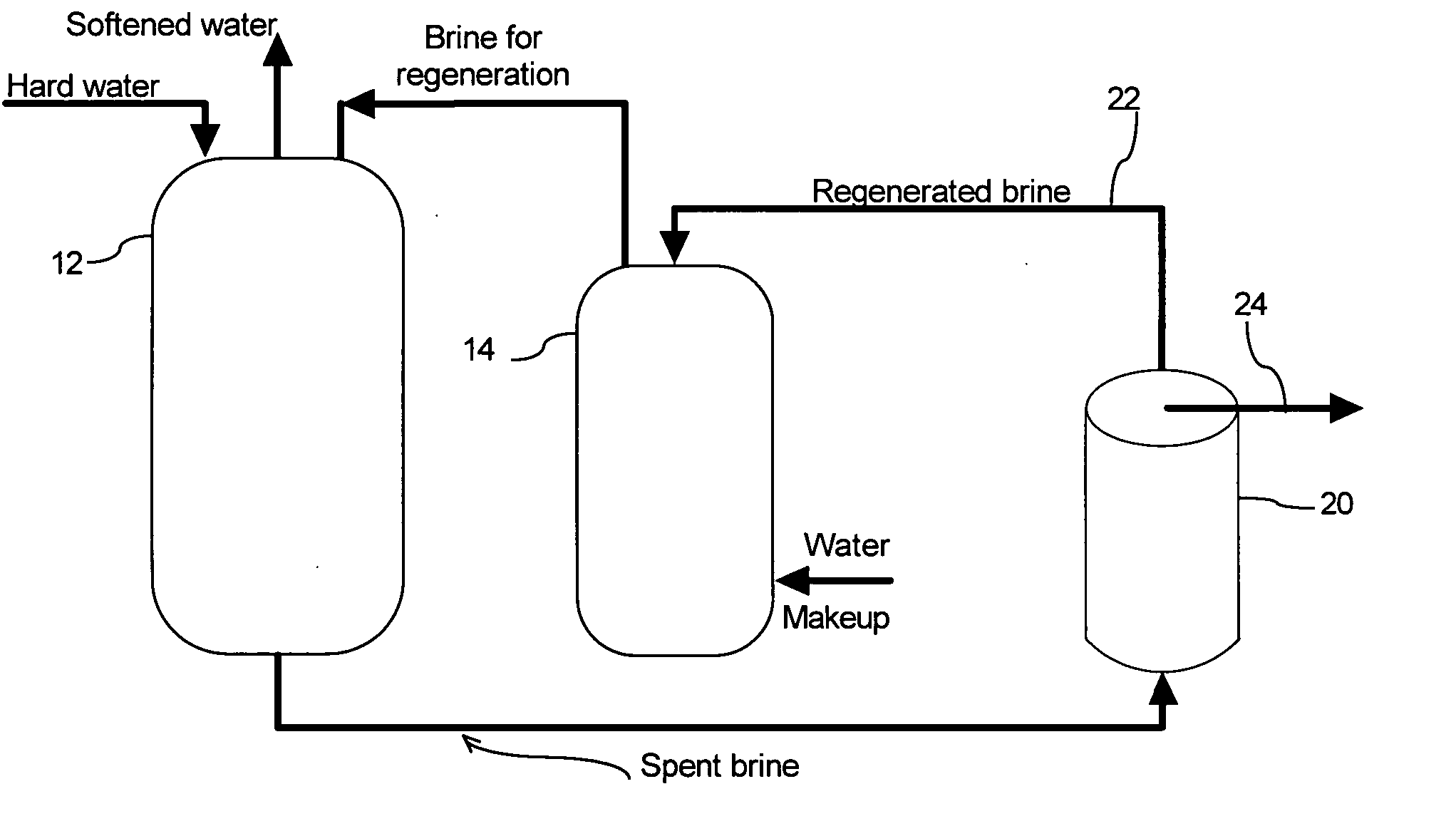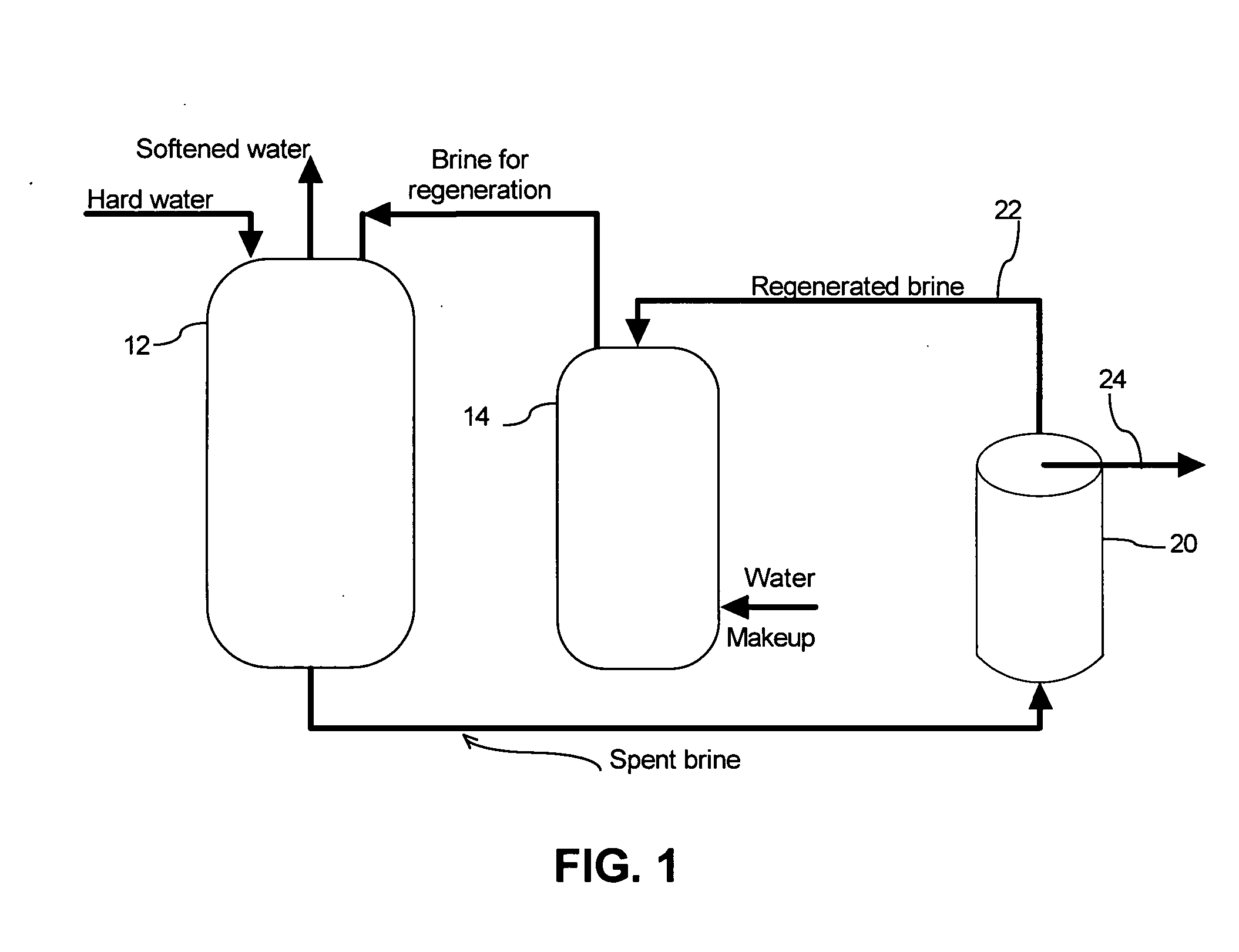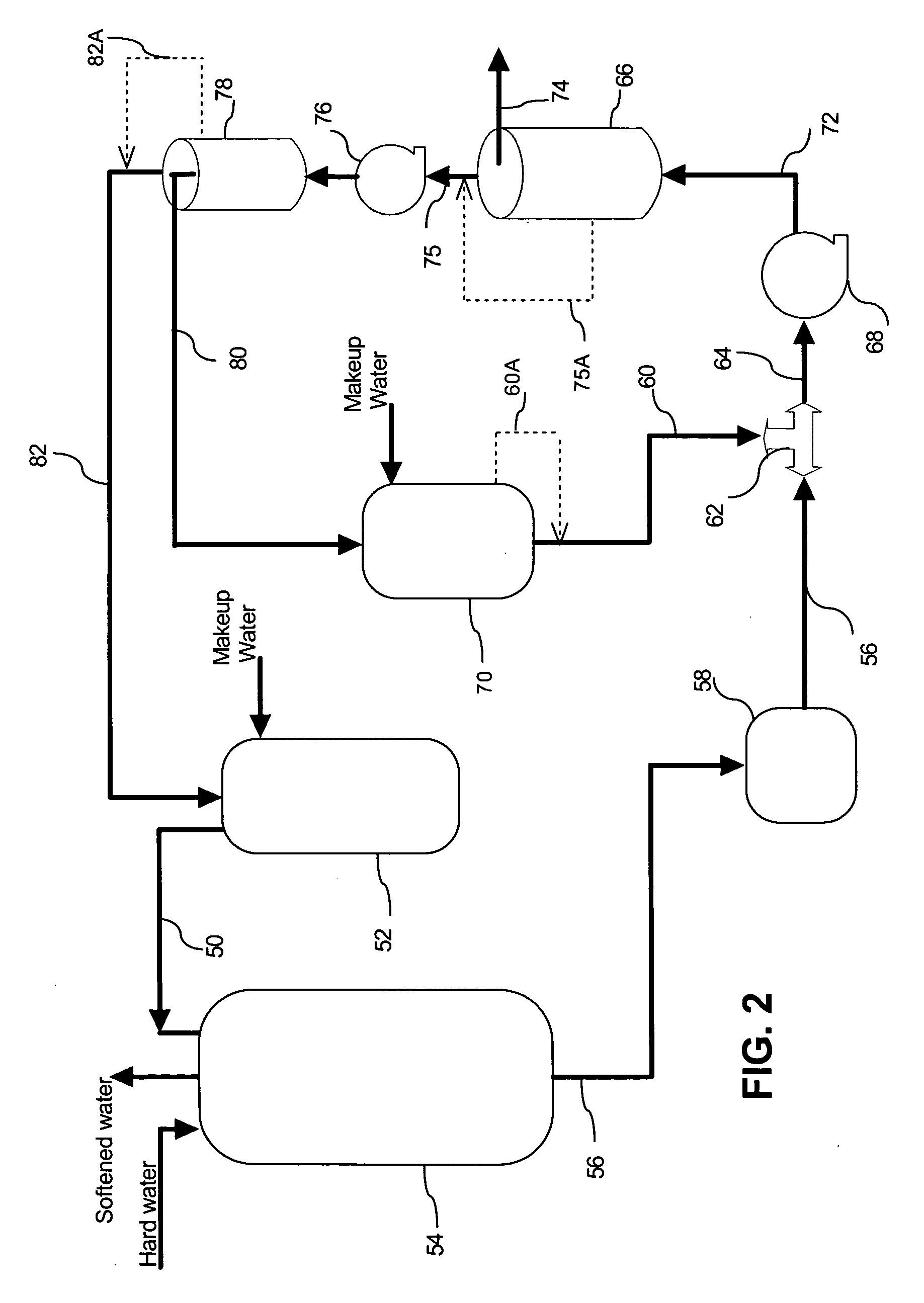System for the purification and reuse of spent brine in a water softener
a technology of purification and reuse, applied in the field of water softeners, can solve the problems of not being easily accessible and the discharge of brine is often no longer acceptabl
- Summary
- Abstract
- Description
- Claims
- Application Information
AI Technical Summary
Problems solved by technology
Method used
Image
Examples
Embodiment Construction
[0011] Below is generic background information solely for the purpose of providing a cursory description of one exemplary operation of a typical water softener. This background information in no way should be construed as limiting the scope of the present invention described further below. As shown in FIG. 1, an exemplary water conditioner system 10 may comprise at least two tanks: a resin tank 12 and a brine (e.g., salt) tank 14. The resin tank is filled with a resin that, for example, comprises relatively small beads of a suitable material, e.g., cross-linked polystyrene sulfonic acid. This resin may be referred to in the art as a cation resin. The beads may be constructed to exhibit a permanent electrical charge. The charge may cause the beads to attract positively charged ions. For example, the resin may be initially placed into service with Na+ ions on the beads. When the hardness ions (e.g., calcium or Ca2+ and magnesium or Mg2+) come in contact with the sodium ions (Na+), suc...
PUM
| Property | Measurement | Unit |
|---|---|---|
| pressure | aaaaa | aaaaa |
| pressure | aaaaa | aaaaa |
| osmotic pressure | aaaaa | aaaaa |
Abstract
Description
Claims
Application Information
 Login to View More
Login to View More - R&D
- Intellectual Property
- Life Sciences
- Materials
- Tech Scout
- Unparalleled Data Quality
- Higher Quality Content
- 60% Fewer Hallucinations
Browse by: Latest US Patents, China's latest patents, Technical Efficacy Thesaurus, Application Domain, Technology Topic, Popular Technical Reports.
© 2025 PatSnap. All rights reserved.Legal|Privacy policy|Modern Slavery Act Transparency Statement|Sitemap|About US| Contact US: help@patsnap.com



